Estimated reading time: 10 minutes
How is Parmesan cheese made?
Have you ever looked at those delicious, umami rich, giant wheels of Parmesan cheese and wonder how they were made? Foodies, fret not! I went on a cheese factory tour in Parma, Italy and took A LOT of notes on how Parmigiano Reggiano (Parmesan) cheese is made. 🧀📝
- How is Parmesan cheese made?
- Parmesan vs. Parmigiano Reggiano Cheese
- The Consortium: Italian Cheese Protectors
- What is DOP in Italy?
- Where is Parmigiano Reggiano cheese made, then?
- How Parmigiano Reggiano cheese is made
- Side Note
- It all starts with the milk! 🐮
- Let’s get them into molds 💫
- Feeling salty? 🧂
- Aging of cheese 🧀
- Tasting time! 🧀
Parmesan vs. Parmigiano Reggiano Cheese
Parmigiano cheese is THE king of cheeses, and its nutty flavor makes it the most famous of all Italian-style cheeses. With record-breaking 2022 sales that reached 2.9 billion EUR with ever-increasing demand, it is very clear that the world LOVES this flavorful cheese.
What is the difference between Parmesan and Parmigiano Reggiano cheese? I’m glad you asked!
Let’s start with their similarities; they are both hard and dry cheeses made from cow milk. They are aged for a certain amount of time to let the flavors evolve and are admired for the complex sharp, umami flavors they add to dishes. The rinds are hard and they taste dry and rich with salty flavor.
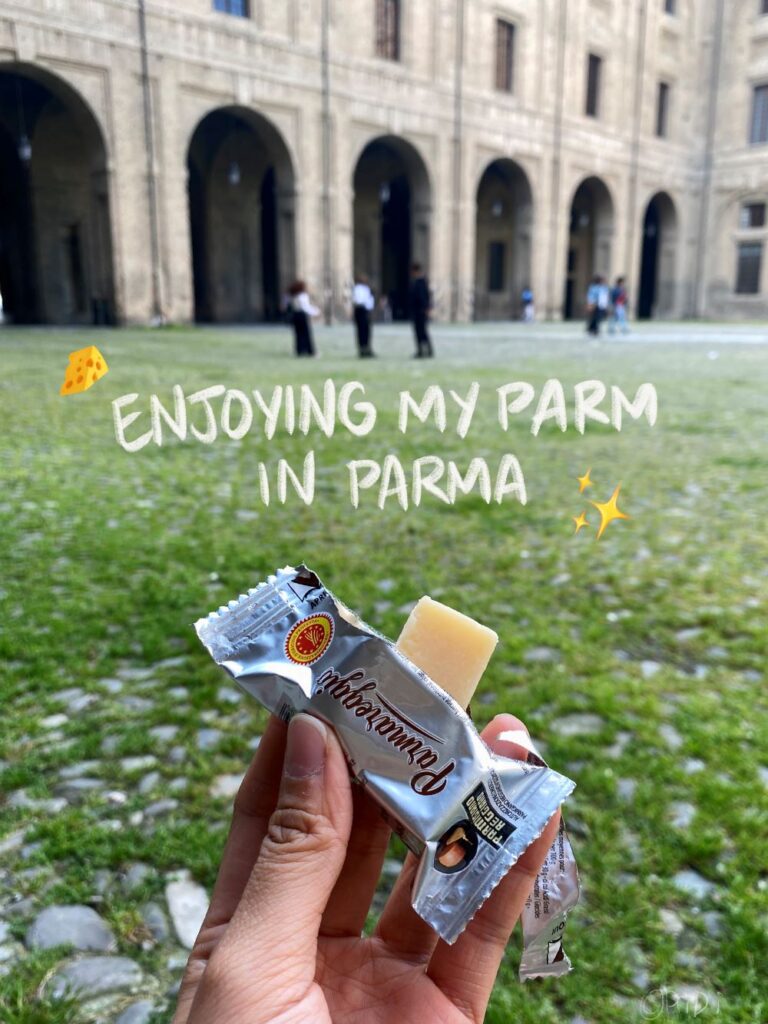
Now onto the differences! Parmesan is an English translation of Parmigiano Reggiano cheese, and it is a free-to-use product name outside of Europe. Cheesemakers from countries outside the EU can create a similar hard and dry cheese and call it Parmesan.
There are no specific regulations regarding the use of the name in the United States, and they will generally be more affordable since it can be produced locally 🧀. One thing for sure though, never buy the pre-grated bottles in the supermarket- it is far inferior compared to the real stuff!
In short, cheese labeled as Parmigiano Reggiano is the real thing, and those grocery store Parmesan-style cheese is not- it’s a generic label.
The Consortium: Italian Cheese Protectors
Parmigiano Reggiano cheese is a DOP-regulated product, produced only in specific areas in Italy.
Who are regulating their productions? The Community of the Parmigiano Reggiano Consortium (Consorzio del Formaggio Parmigiano-Reggiano)! They are responsible in regulating the individual dairies that are allowed to make this type of cheese.
Inspectors from the Consortium will perform checks and examinations on the production process and the cheese wheel quality (more on that below!).
There are MANY RULES that were established by the Consortium to ensure the quality of Parmigiano Reggiano cheese. Other than geographical restrictions, they have weight, dimension, fatty acid ratio, taste, ingredient, aging period, and even cow feed requirements!
A “real” Parmigiano cheese are only composed of 3 ingredients: cow’s milk (yes, has to be cow), salt, and calf rennet. The milk also has to come from cows raised in the areas mentioned above 🐄.
Then and only then, the cheesemaker can imprint the classic imprint around their cheeses and sell them as an official Parmigiano-Reggiano cheese!
What is DOP in Italy?
Denominazione di Origine Protetta (DOP) or protected designation of origin, is a European Union protection for regional food products. DOP creates strict regulations on what is considered true Parmigiano Reggiano cheese.
This was created to protect local producers from counterfeit goods and to provide a quality assurance system throughout the protected region.
They have lots of restrictions on the raw materials. For example, the cows have to be raised in the areas previously mentioned. Not just that, the milk has to be processed there as well.
The cow’s feed also has to come from the Parma-Reggio region, with very specific composition! They also ensure that dairies still follow traditional methods and processes, even when modern industrialization has entered the scene.
The three components controlled by the DOP are what makes Parmigiano Reggiano cheese so special: the soil where hay is grown, the climate, and the human factor. They also inspect every single cheese with the little hammer action you see above! 🔨
Where is Parmigiano Reggiano cheese made, then?
The only dairies allowed to produce DOP-protected Parmigiano Reggiano cheese are the provinces of Parma, Reggio Emilia, Modena, Bologna, left of the River Reno and Mantua, and the right of the River Po.
Outside of the Parma-Reggio region of Italy, cheesemakers cannot call their products “Parmigiano Reggiano”. Naughty cheese makers can even get sued by the Consortium in the European courts!
How Parmigiano Reggiano cheese is made
Now onto the fun part! My tour picked me up from Parma, Italy, to head to the caseificio (cheese factory) early in the morning. A master cheesemaker and his apprentice greeted us once we entered the facility. The apprentice has to train 7-10 years before becoming a master cheesemaker himself!
Side Note
It can get dangerous as well, one Grana Padano cheesemaker was tragically buried in 15,000 wheels of cheese (and unalived 😱) when his shelves broke. Such a tragic case 😭
Other than having to train for a very long time, a master cheesemaker has to be very passionate at what he does. It’s a very intense job and they have to make Parmesan cheese for 6 hours every day, 365 days a year! It is a very physically taxing process, because some steps are still very manual.
It all starts with the milk! 🐮
First, the cheese production starts with milking the dairy cows the night before. Then, the cheesemaker has to cool down raw milk in big metal basins.
At 5 am the following morning, they skim this cooled-down milk. It is now time to mix this skim milk with that morning’s whole milk production!
They will then cook this partially skimmed milk twice in copper vats. Then the master cheesemaker and his assistant will add animal rennet powder, and wait for the milk to curdle.
Rennet is an enzyme from the cow’s stomach- it turns the milk protein casein into small blobs by breaking down its chain. The process continues by further heating up the mixture to around 56ºC for pasteurization.
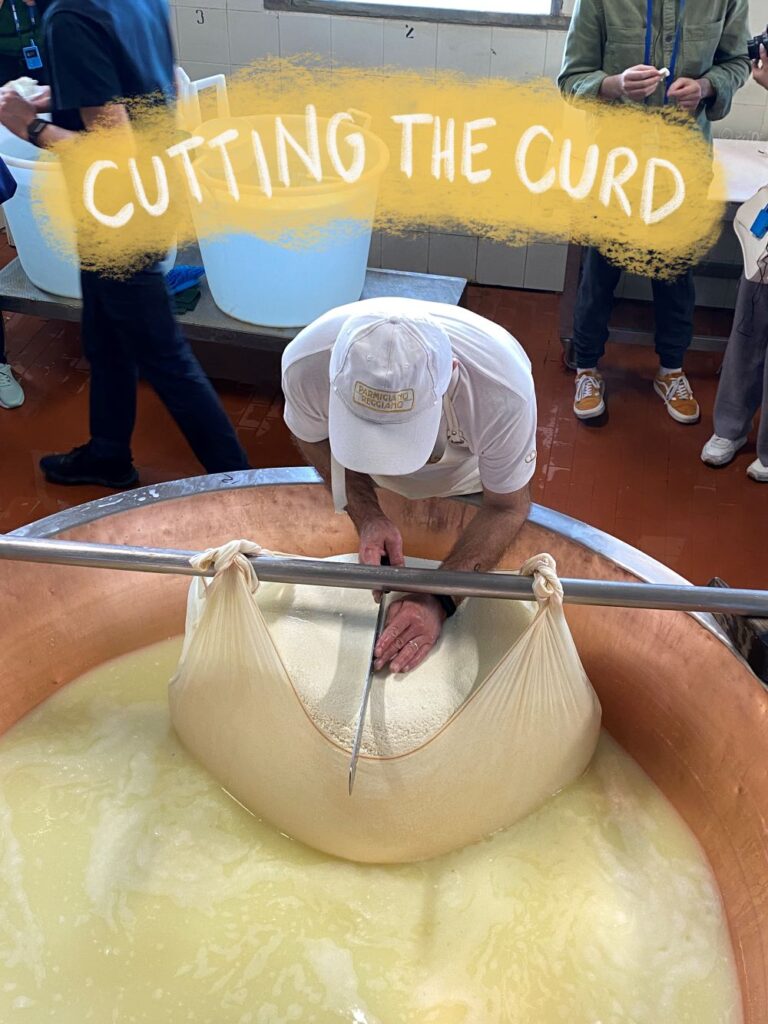
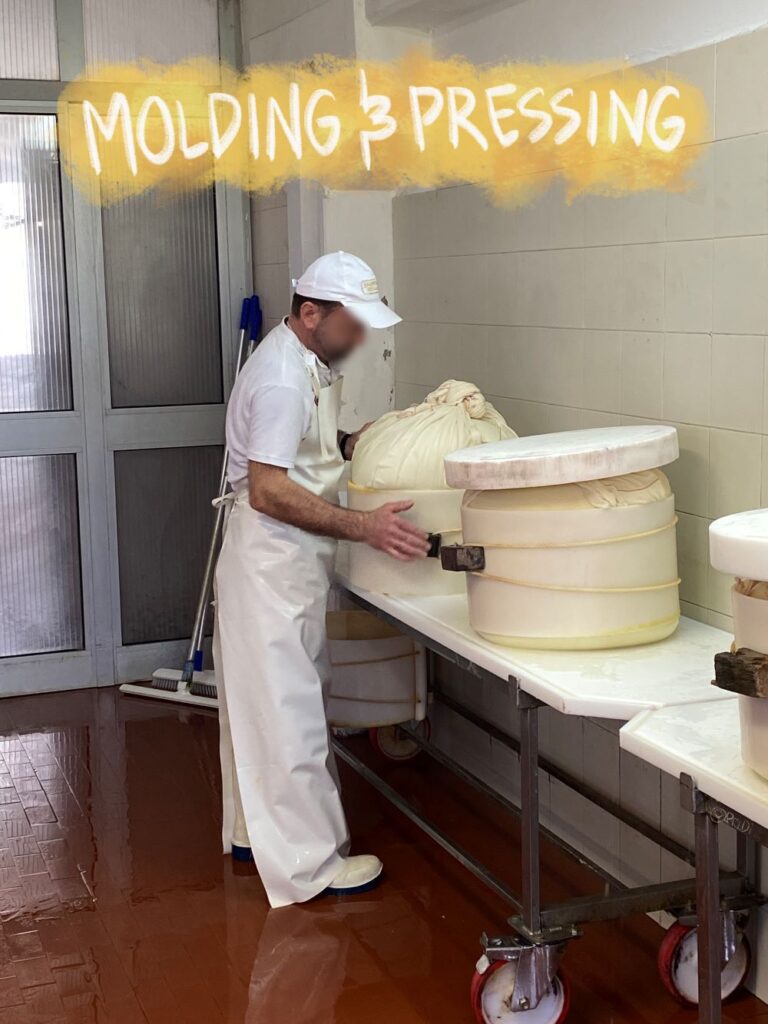
Let’s get them into molds 💫
After cooking, they then strain and cut the milk solids! They gave us some of these cheese curds to try; they just tasted like bland, rubbery, squeaky cottage cheese. Interesting to see how these curds will become the king of cheese with time, patience, and some salt.
They then pack these curds into molds and left overnight to expel water. Peek at these official cheese molds! They can only get them from the Consortium.
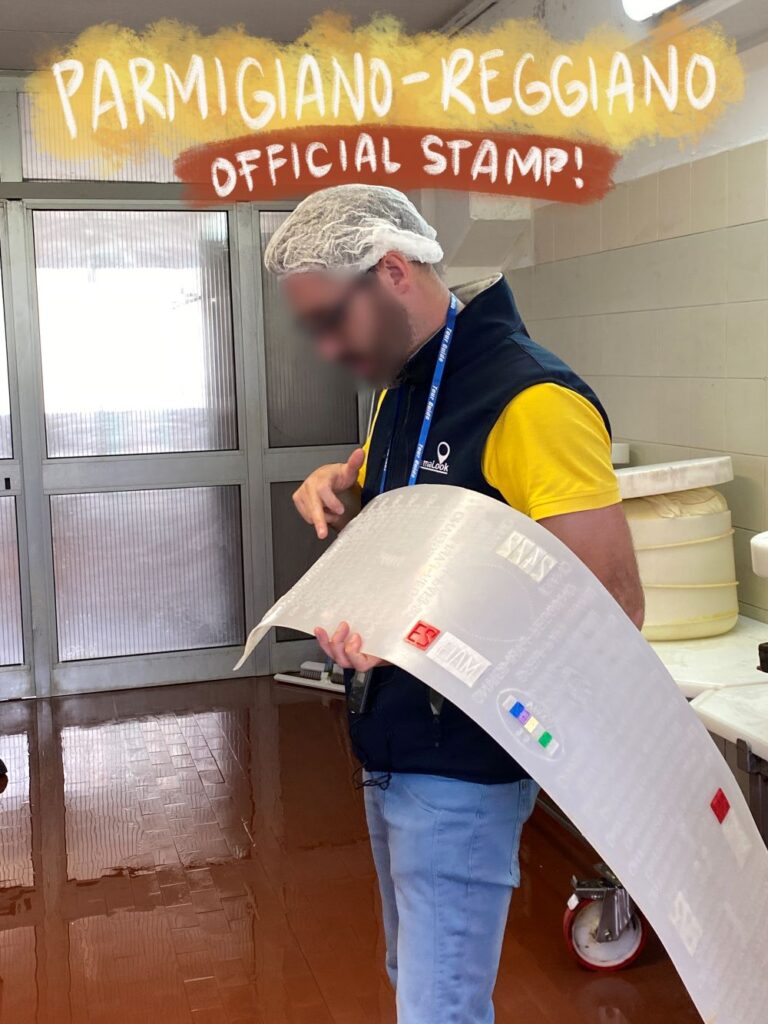
Feeling salty? 🧂
After some flipping action on the second day, these cheesemakers will put these cheese-to-be’s inside a Sicilian salt brine solution. Look at this Dead Sea visual!
For 21-22 days, these cheese wheels will float along together and get flipped every single day.
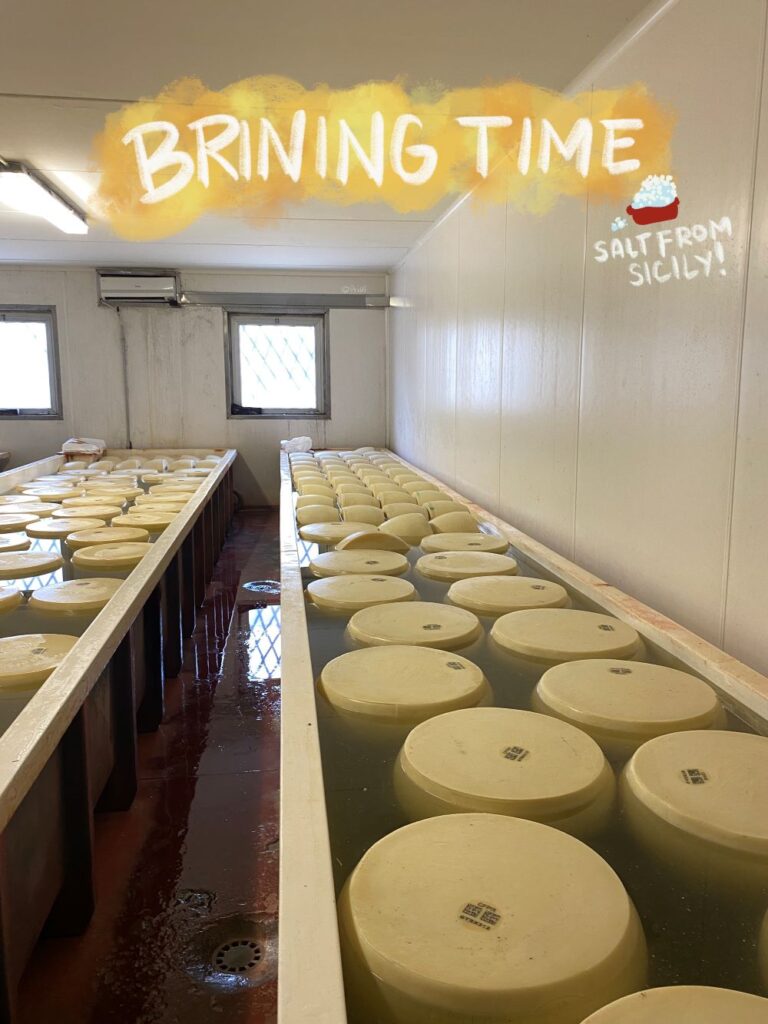
Did you notice the QR codes on the wheels? They have a new tracing system for their cheese, to avoid counterfeits. Isn’t it cool?
Ah and finally, the last (very long) phase: aging!
Aging of cheese 🧀
The Consortium require dairies to age their cheese a minimum of 12 months! These giant wheels are aged at a temperature and humidity-controlled room, and it was such an amazing sight to see. Look at this cheese heaven! 👼🏻
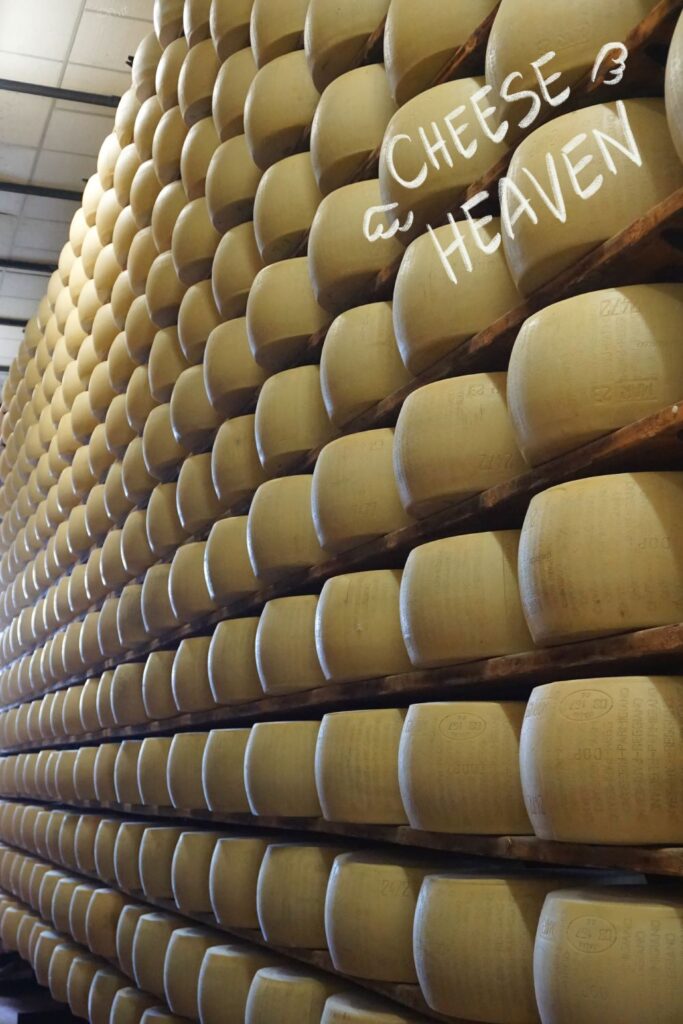
After 12 months, the Consortium will pay the dairy a visit and check on every single wheel. They will come along with a little hammer and knock on each one!
If it sounds hollow, it means that the cheese wheel has a big hole inside- which is definitely not allowed. The DOP will mark the passing cheese wheels with an official approval stamp.
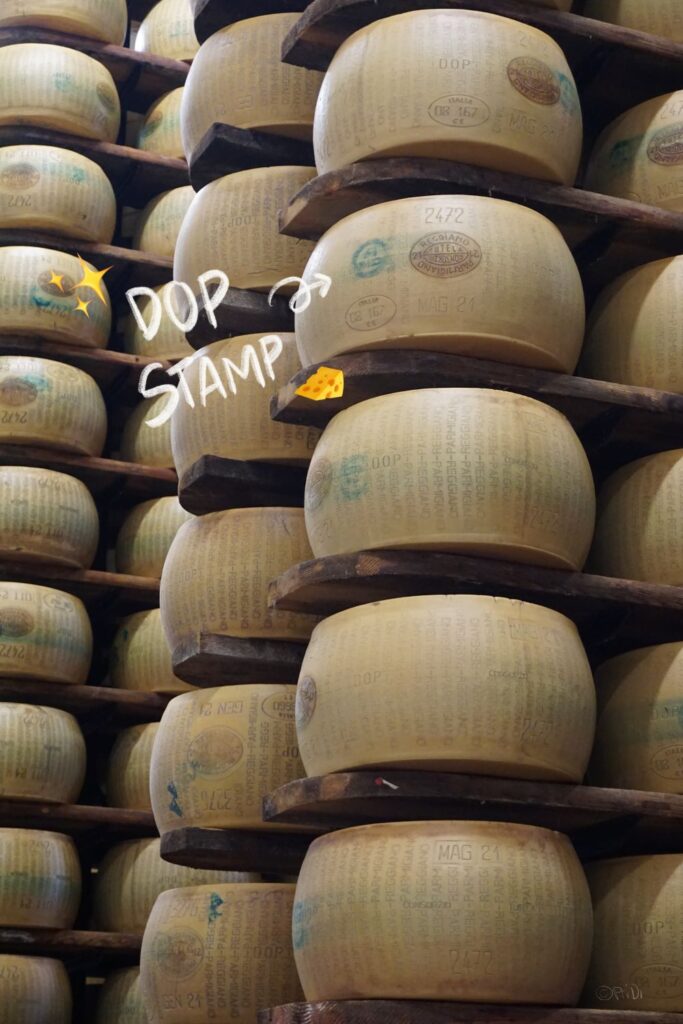
The cheeses can be aged further, to achieve more of those umami-enhancing crystalline structure. Ever bit into a Parmesan cheese and felt something slightly crunchy? These little crystals are perfectly edible, and they really only appear after a minimum of 20 months of aging.
In Italy, I found that Parmigiano Reggiano cheese aged between 12-24 months are available in grocery stores. Keep in mind that if you want to taste a more mature cheese, you can always swing by a caseificio (cheese maker) and get some!
Tasting time! 🧀
I had the pleasure of tasting a 22-month and 36-month old cheese. Pure bliss for cheeseheads like me! They also served us some Lambrusco, a natural sparkling red wine produced in the region 🍷
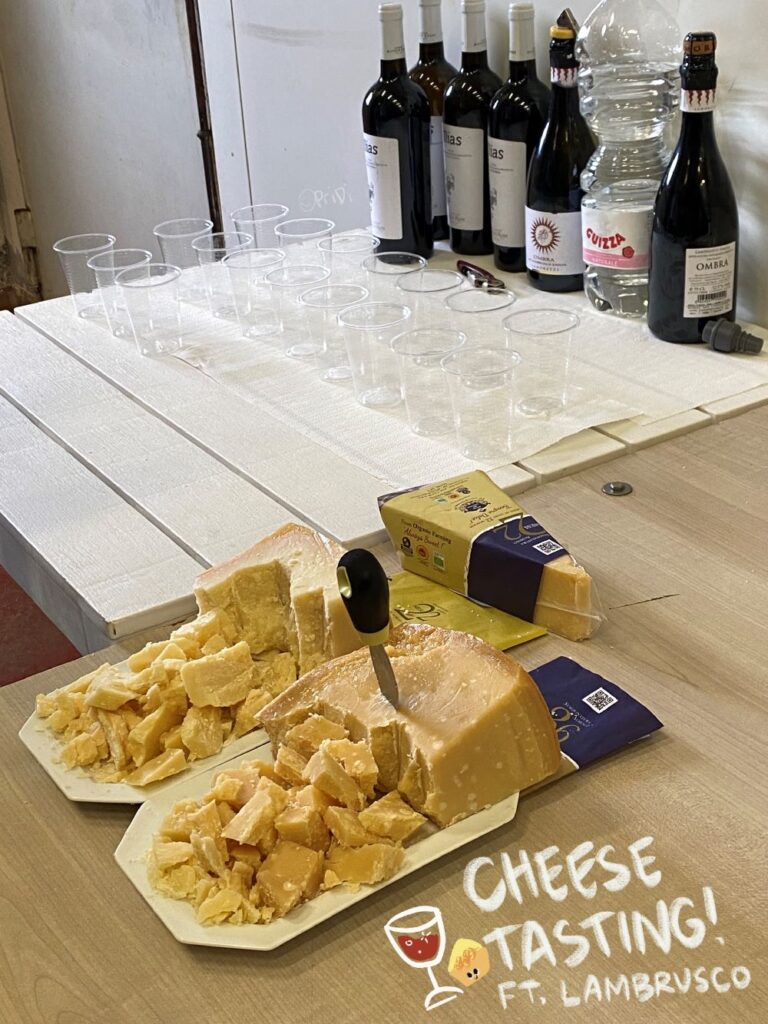
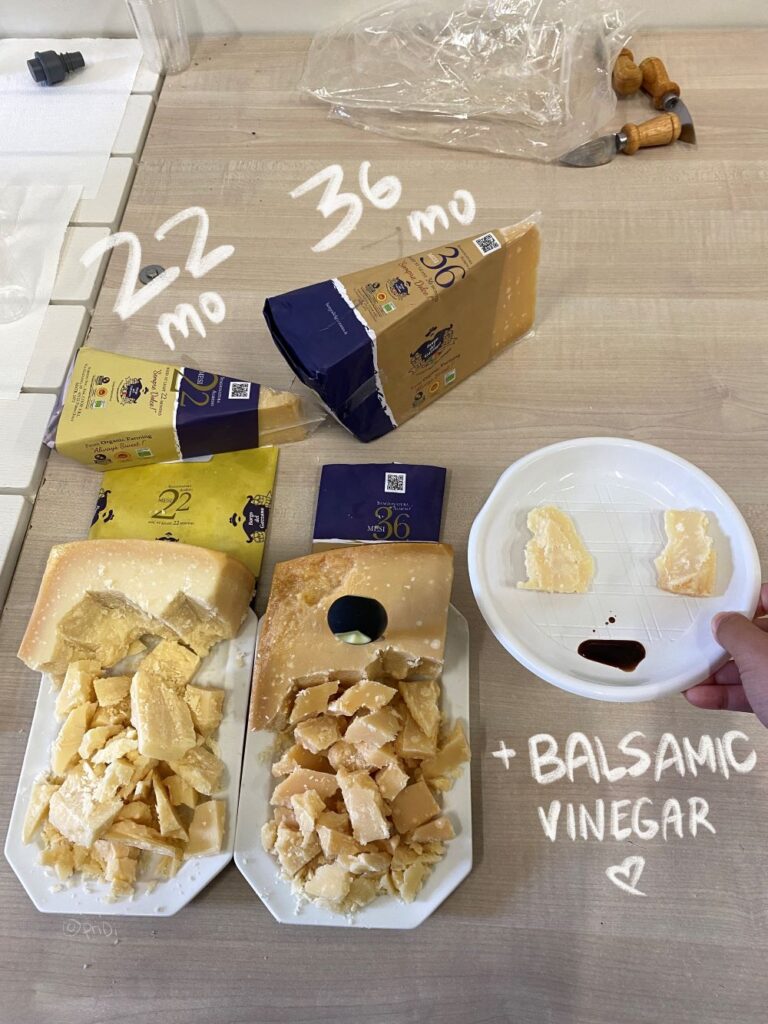
So how do they taste? The 22-month old was softer, bouncier, and had very good nutty taste. The crunchy crystals gave me flavor bombs I really enjoyed!
On the other hand, the 36-month old was drier, crumblier, and chock-full with these flavorful cheese crystals. I loved the flavor, but I found that the 22-month old had better balance for my palate.
All in all, I really enjoyed my experience! The sparkling glass of red wine added to the complex flavors you cannot get anywhere else.
Check out the Parmigiano Reggiano caseificio tour while you’re in the Parma area. Matteo was a delightful guide, and being the son of a cheesemaker himself, was a great firsthand storyteller!
P.S. = Don’t forget to download these apps before traveling to Italy! I swear, these make your life so much easier. Also check out these wonderful places in Florence, Prosciutto di Parma factory tour, and balsamic vinegar production tour– don’t miss out! 💫

Pin It!


3 comments on “How Parmesan Cheese is Made (Parmigiano Reggiano Making)”